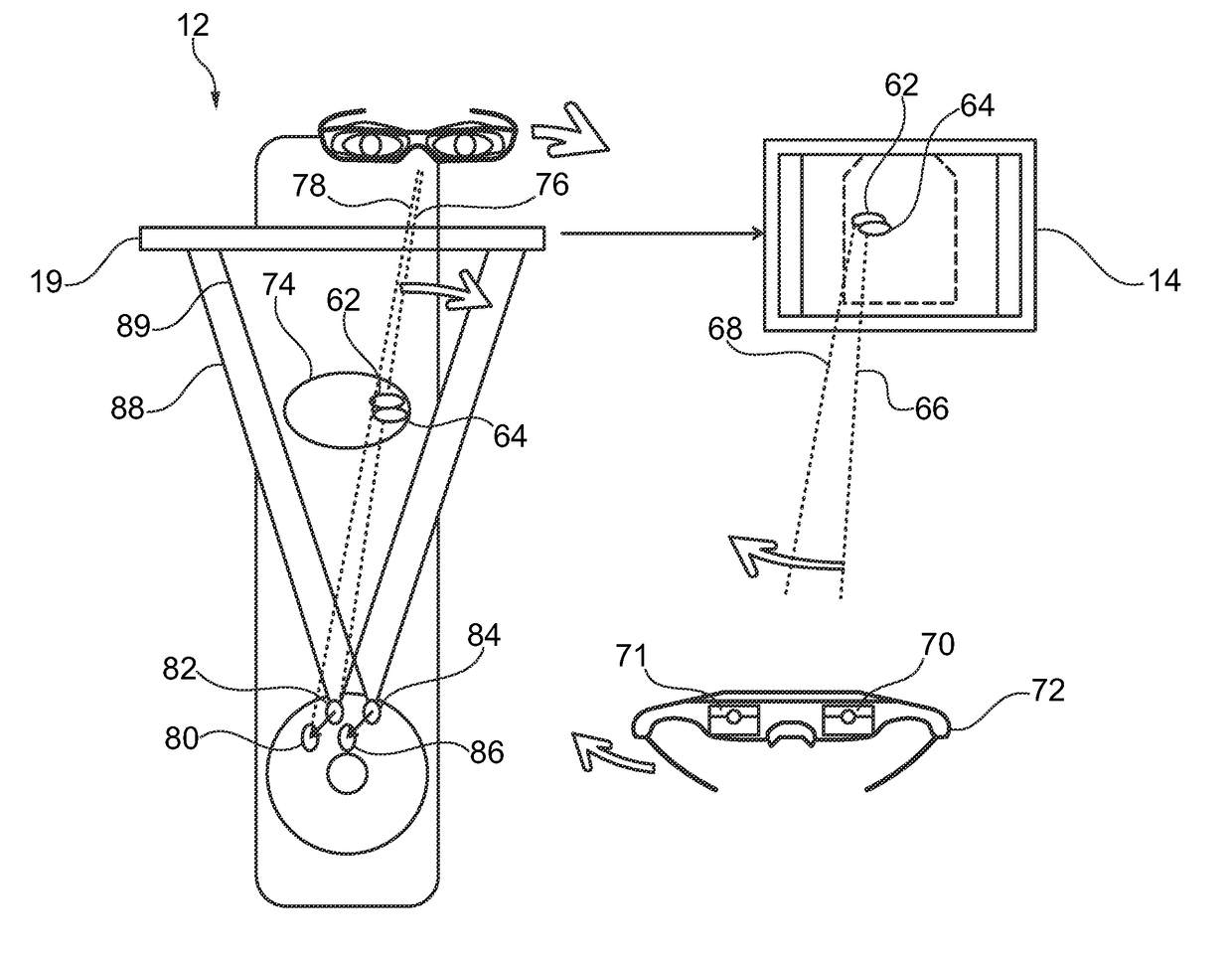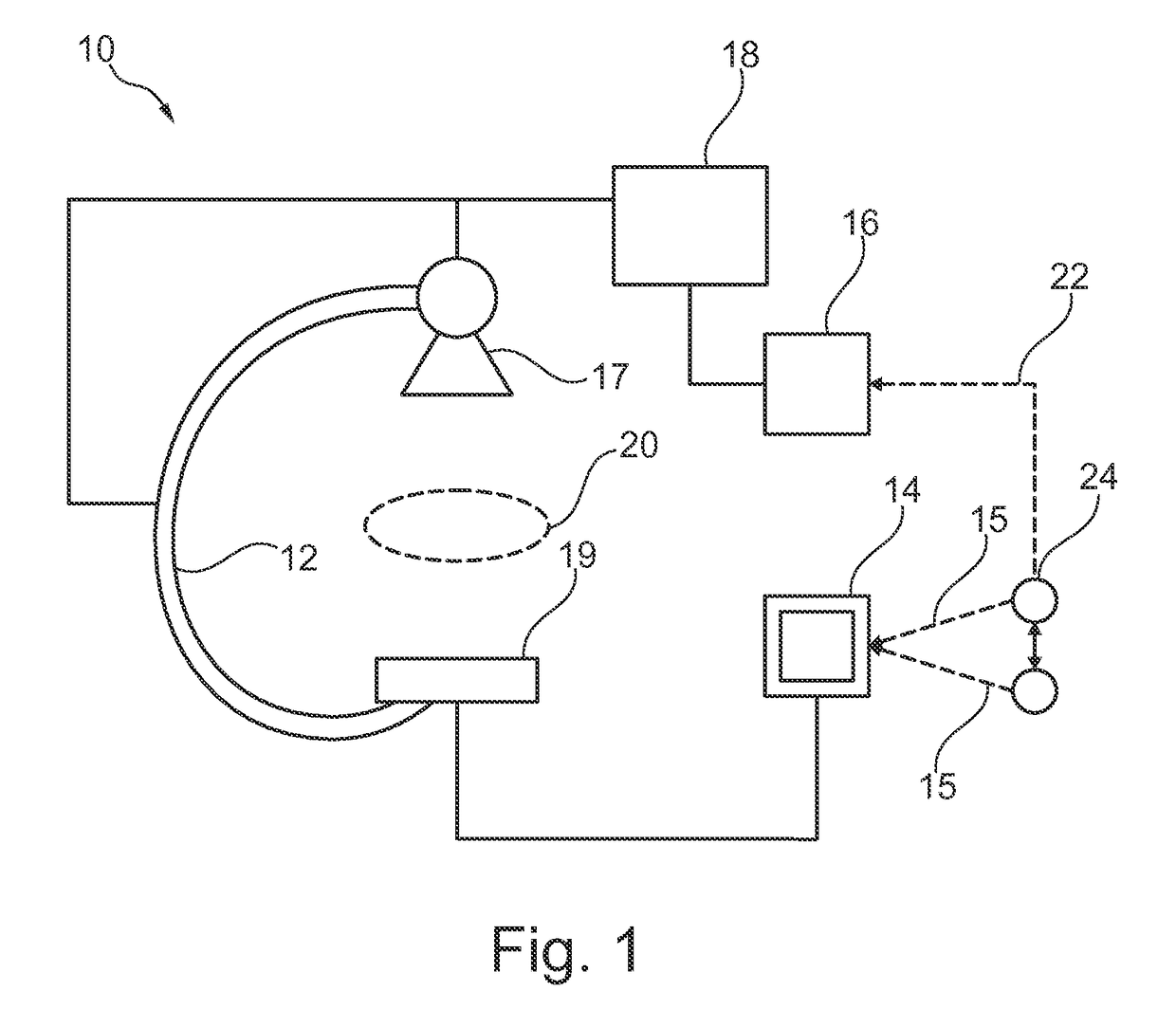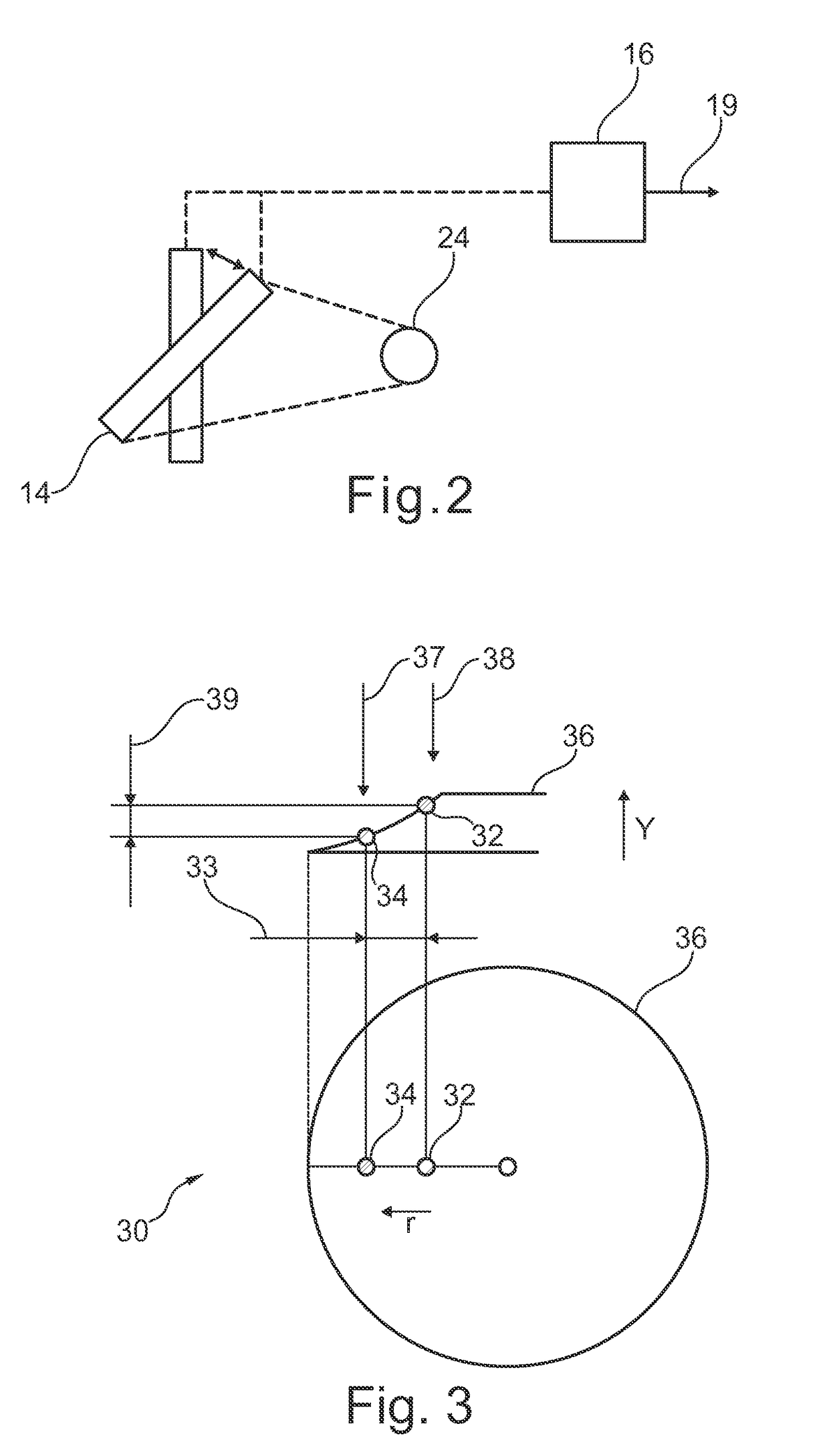Direct control of X-ray focal spot movement
a technology of x-ray and focal spot, applied in the field of direct control of x-ray focal spot movement and x-ray imaging system, can solve problems such as the complexity that the medical staff has to manage, and achieve the effect of reducing the complexity of a workflow
- Summary
- Abstract
- Description
- Claims
- Application Information
AI Technical Summary
Benefits of technology
Problems solved by technology
Method used
Image
Examples
Embodiment Construction
[0049]FIG. 1 describes an X-ray imaging system 10 for providing spatial information of a volume of interest 20 of an object. The X-ray imaging system comprises an image acquisition unit 12, adaption means 18, a user input unit 16, a user input signal 22, a user 24, a viewing direction 15 of a user, and a display unit 14. The image acquisition unit 12 comprises an X-ray source 17 and a detector 19, adapted to generate images of a volume of interest 20. The X-ray source 17 emits X-ray radiation which radiates through the volume of interest 20 and is received at the detector 19. The detector 19 and the X-ray source 17 can be mechanically arranged, for instance using a C-arm. The C-arm of the image acquisition unit 12 can be moved in all dimensions of the room. Instead of a C-arm, any other mechanical means can be used. The movement of the different mechanical components of the image acquisition system is achieved by adapting means 18.
[0050]The adapting means can be motor-driven means t...
PUM
 Login to View More
Login to View More Abstract
Description
Claims
Application Information
 Login to View More
Login to View More - R&D
- Intellectual Property
- Life Sciences
- Materials
- Tech Scout
- Unparalleled Data Quality
- Higher Quality Content
- 60% Fewer Hallucinations
Browse by: Latest US Patents, China's latest patents, Technical Efficacy Thesaurus, Application Domain, Technology Topic, Popular Technical Reports.
© 2025 PatSnap. All rights reserved.Legal|Privacy policy|Modern Slavery Act Transparency Statement|Sitemap|About US| Contact US: help@patsnap.com



